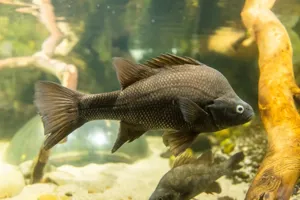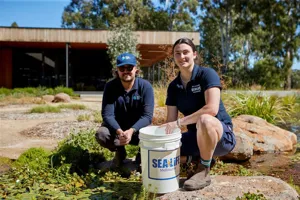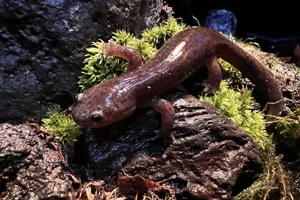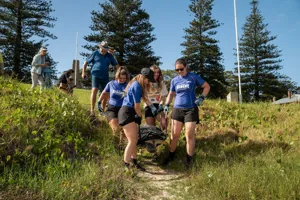Helping Freshwater Species
SEA LIFE is dedicated to protecting freshwater species across the globe. From breeding endangered native fish in Australia to restoring habitats and engaging local communities, SEA LIFE works with partners worldwide to safeguard vital freshwater ecosystems and the unique species that call them home.

Breeding the Southern Pygmy Perch
Following a dramatic decline in numbers over the past two decades, the Southern Pygmy Perch – a small species of native, freshwater fish are now listed as Endangered in NSW. The small but mighty, Southern Pygmy Perch plays an important part in the eco-system of freshwater streams and wetlands in South Eastern Australia, and to help drive the recovery of this species, SEA LIFE Sydney Aquarium is proud to launch a recovery program in collaboration with the NSW Department of Primary Industries (DPI) Fisheries.
The program aims to establish breeding populations of Southern Pygmy Perch at SEA LIFE Sydney Aquarium, then raise and release the fish into refuges, creating new populations and boosting the number and genetic diversity of existing populations of this species.
Find out more

Rescuing Crayfish
White-clawed crayfish is an endangered native UK species under threat from the invasive USA signal crayfish (Pacifastacus leniusculus).
Our team at the National SEA LIFE Birmingham, have partnered with the Environment Agency, Staffordshire Wildlife Trust and Natural England to produce the Midlands’ first licenced crayfish hatchery for white-clawed crayfish. In 2024, 100 rescued creatures deemed at too high-risk from invasive species, were transferred to our ARK site (a home away from the threat) until a new home is found in 2025

Saving the Macquarie Perch
Macquarie Perch, once widespread in the Murray-Darling system, are now nationally endangered, with only a few self-sustaining wild populations remaining. To support their recovery, SEA LIFE Melbourne and Fisheries are partnering on a project that combines habitat restoration, breeding, restocking, and community engagement. Efforts include improving breeding at Snobs Creek hatchery and releasing fish into bushfire-affected rivers like the Buffalo, King, and Cudgewa. The initiative also involves local communities, Landcare groups, Traditional Owners, and angling clubs to help restore and protect this vital native species.
Find out more

Protecting the Paddlefish in Missouri

Conservation Pond - A World of Biodiversity
At SEA LIFE Porto, we are developing a freshwater conservation pond in collaboration with the local authorities, University of Porto and the SEA LIFE TRUST.
This project promotes the conservation of freshwater habitats and provides new habitats for native species settlement to reduce biodiversity loss. We provide regular talks on the project to school groups in our hatchery area to encourage awareness among the local community.

Saving the Endangered Zombie Fish
SEA LIFE Melbourne Aquarium, in partnership with the North Central Catchment Management Authority (CMA), has released rainbowfish and 13 southern purple spotted gudgeon—also known as Zombie fish—into Victorian waterways. This marks the third species successfully bred and reintroduced through the collaboration, which provides vital support like brood stock and habitat selection. The aquarium remains dedicated to conserving endangered freshwater species, including the olive perchlet, aiming to protect Australia’s aquatic ecosystems through ongoing efforts and partnerships.
Find out more

Amphibian Conservation Work
We also work in freshwater environments to protect the most threatened vertebrate class, amphibians! We are working with partners at Speyer and Oberhausen SEA LIFE, Germany, to breed threatened species, such as the Patzcuaro cross-toothed newt (Ambystoma dumerilii) and Titicaca water frog (Telmatobius coleus), which are both extinct in the wild, for an ARK site (a new home away from the threat and future population recovery). We are working with further partners to help in the field on populations of fire salamanders (Salamandra salamandra) and great crested newts (Triturus cristatus) to help in the fight against the fungal pathogen, Batrachochytrium salamandrivorans (Bsal).

Our latest news
Dive in and discover our latest news, stories and fun facts from all around the globe!
Dive in